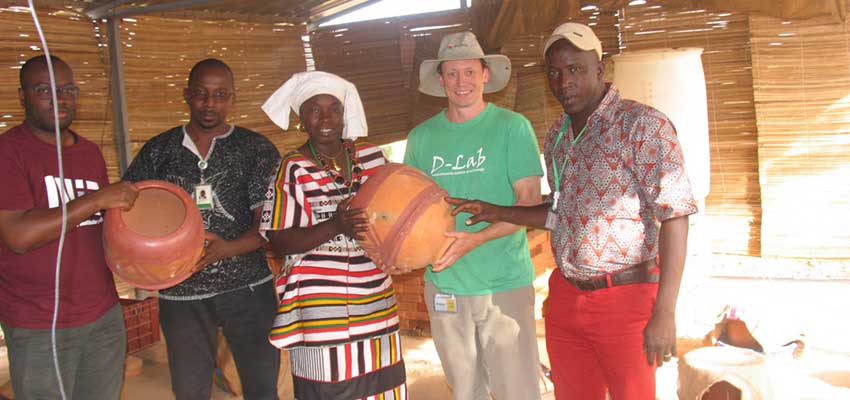
Improving nutrition through clay pot coolers
Each year, one-third of food produced for human consumption is lost or goes to waste worldwide. Technologies that can prevent the loss of food throughout the supply chain are greatly needed, especially ones that are affordable and accessible.
Enter USAID’s development lab at MIT D-Lab, called the Comprehensive Initiative on Technology Evaluation (CITE) which has studied, refined, and promoted the simple technology of clay pot coolers. Clay pot coolers prolong the shelf-life of produce, thereby reducing waste and increasing households’ access to fresh and nutritious fruits and vegetables.
In 2017 with USAID’s support, MIT D-Lab set out to evaluate the appropriateness of clay pot coolers for reducing fruit and vegetable loss in Mali, where food loss is a contributor to the country’s high rates of food insecurity.
Clay pot coolers, also known as zeer pots, have been in use for centuries in many parts of the world and operate on a simple principle of passive evaporation. These storage devices, which operate without electricity, consist of two pots nested together with a layer of sand in between and covered with a wet cloth. As water evaporates from the surfaces of the device, evaporation cools the fruits and vegetables inside the pot.
Less than a quarter of Mali’s rural population is connected to the electricity grid, underscoring the important role the coolers play in maintaining fruits and vegetables at a cooler temperature and higher humidity. The coolers also protect these nutritious fruits and vegetables from animals and insects.
As a result, produce stored in clay pot coolers maintain their nutritional value and have a longer shelf-life due to a reduction in water loss, rotting, and degradation. This ultimately helps to prevent food loss, improve nutrition, and decrease the amount of time and money spent going to the market for both consumers and farmers.
Since 2017, Kadidia Nienta, a clay pot maker in Mali’s Mopti region, has been working with MIT D-Lab’s Evaporative Cooling research group to refine and disseminate the technology and attest to the value of clay pot coolers. Kadidia comes from a long line of clay pot makers with the profession being passed down from mother to daughter over generations. Kadidia’s insights and knowledge contributed to a new clay pot cooler design that was not only more affordable and accessible, but also performed better in keeping fruits and vegetables fresh. In Mopti, it is typical to purchase fruits and vegetables every other day.
Clay pot coolers offer benefits for farmers, consumers, and produce sellers. Farmers and vendors in Mopti can avoid losses prior to selling their produce by storing it in clay pot coolers to keep it fresh.
And as for consumers, Kadidia states: “When you buy fruits and vegetables, storing them in the clay pot cooler reduces waste because they do not spoil or wilt. The good preservation of fresh vegetables also results in savings and reduces the number of days you have to go to the market.”
In Mopti, clay pot coolers are also called “the fruit and vegetable refrigerator” because of their surprising benefits.
According to Kadidia, “With these clay pot coolers, when you buy things from the market and bring them home, you can cook what you need and put the rest inside the pot. If you use them as instructed, preservation can last four to five days without any spoilage. When you open the pot, the fruits and vegetables look the same as when you purchased them from the market.”
Kadidia helps develop curriculum and leads trainings in her community of nearly 2 million people, sharing the positive attributes of clay pot coolers. Their use has also increased demand for clay pot makers’ products. Thanks to this work, 73 percent of clay pot training attendees have adopted clay pot coolers.
For 60 years, USAID has promoted food security and nutrition throughout the world using research and innovation. The clay pot coolers adapted for use in Mali are an attestment to USAID’s research and innovation efforts helping to create development solutions appropriate for local contexts.
About the Author
Eseroghene Oruma is the lead Communications Specialist in the Research Division of the Innovation, Technology, and Research Hub at USAID.
More Information
Evaporative Cooling for Vegetable Preservation
Contact
Eric Verploegen, MIT D-Lab Research Engineer

